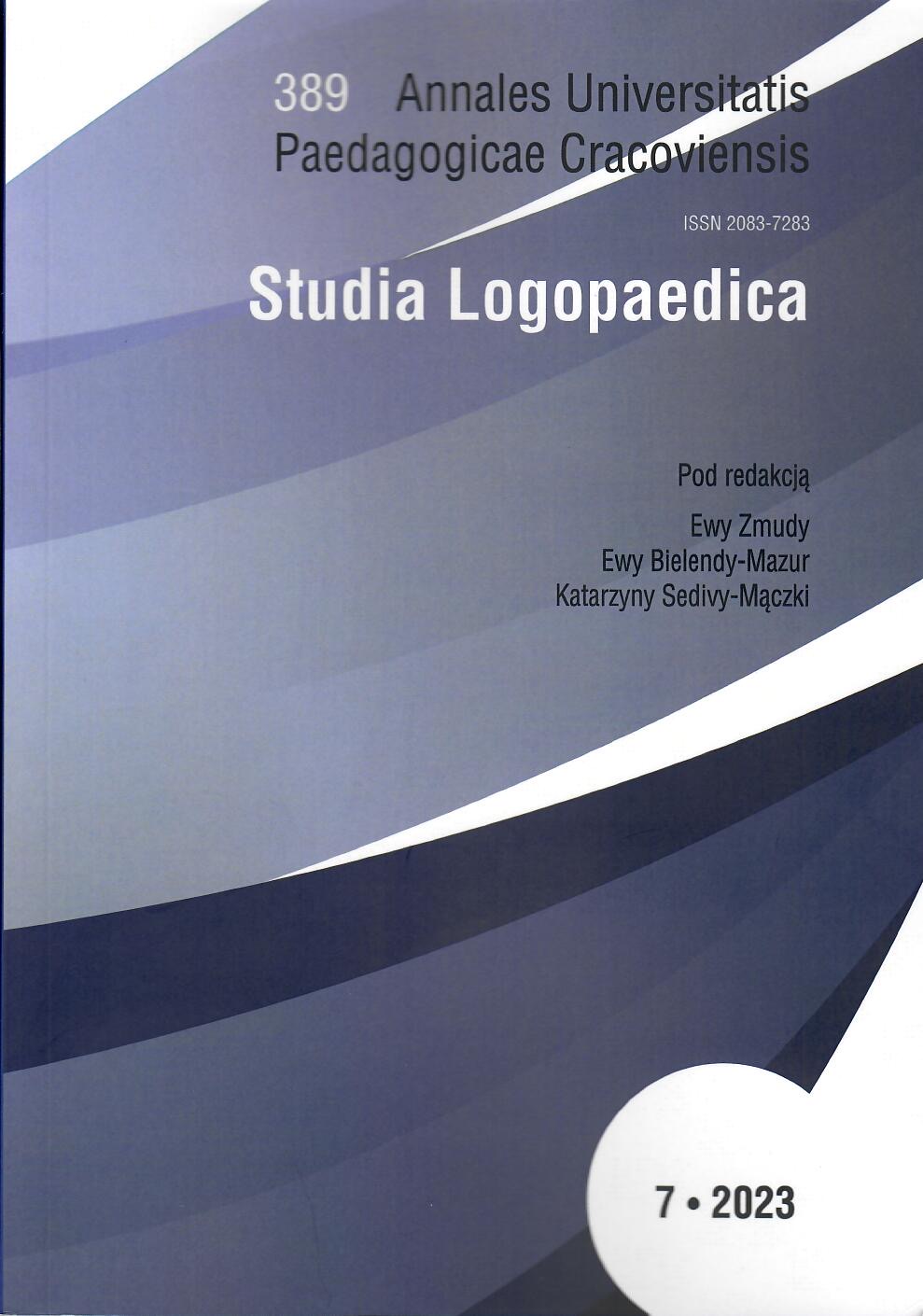Communication of children on the autism spectrum – the use of the movable alphabet and MTG® in therapy
DOI:
https://doi.org/10.24917/20837283.7.13Keywords:
autism, movable alphabet, Manually Supported Phoneme Production (MTG), speech, language communicationAbstract
The article presents the application of the movable alphabet and Manually Supported Phoneme Production (MTG®) in the therapeutic process of nonverbal children with autism spectrum disorder. Incorporating both techniques into therapy, such as communication through writing and verbalization through the therapist’s guided movement, allows the children to experience expressing their own thoughts in a way most similar to their interlocutor. Simultaneous four‑modal stimulation: visual, motor, tactile and auditory, activates areas of the brain responsible for speech processes, thereby giving the child a perspective on speech development. Utterances created with the use of the movable alphabet by children with ASD, both senior preschoolers and school‑age children, demonstrate the multifaceted nature of language communication, revealing their intellectual potential, which is difficult to assess in the absence of independent verbalization.
References
Cieszyńska J. (2010). Wczesna diagnoza i terapia zaburzeń autystycznych. Kraków: Wydawnictwo Centrum Metody Krakowskiej.
Google Scholar
Cieszyńska J. (2012). Metody Wywoływania Głosek. Kraków: Omega Stage Systems – Jędrzej Cieszyński.
Google Scholar
Cieszyńska‑Rożek J. (2013). Metoda Krakowska wobec zaburzeń rozwoju dzieci. Kraków: Omega Stage Systems – Jędrzej Cieszyński.
Google Scholar
Cieszyńska‑Rożek J. (2017). Wczesna diagnoza nieprawidłowości rozwoju dzieci. Spektrum autyzmu. W: G. Jastrzębowska, J. Góral‑Półrola
Google Scholar
i A. Kozołub, Neuropsychologia, neurologopedia i neurolingwistyka in honorem Maria Pąchalska (s. 459–476). Opole: Wydawnictwo Uniwersytet Opolski.
Google Scholar
Cieszyńska‑Rożek J. (2020). Neurobiologiczne podstawy rozwoju poznawczego. Ruch. Kraków: Centrum Metody Krakowskiej.
Google Scholar
Cieszyńska‑Rożek J. (2022). Kształtowanie planu ruchu artykulacyjnego. Logopedia, 51, 2, 97–112.
Google Scholar
Cieszyńska‑Rożek J. (2022). Neurobiologiczne podstawy rozwoju poznawczego. Język. Kraków: Centrum Metody Krakowskiej.
Google Scholar
Kedar I. (2022). Ido w Krainie Autyzmu. Rzeszów: Wydawnictwo Nie Tylko Autyzm.
Google Scholar
Kosmulska B. (2023). „Niektórzy – czyli nie wszyscy”. O niemówiących, lecz piszących autystach: Adamie Siłkowskim, Ido Kedarze i filmowym Śubuku. Teksty Drugie, 6, 359–376.
Google Scholar
Rostowski J., Rostowska T. (2014). Rola systemu lustrzanych neuronów w rozwoju języka i komunikacji interpersonalnej. Psychologia Rozwojowa, 19, 2, 49–65.
Google Scholar
Rutkiewicz‑Hanczewska M. (2020). Dziecięca apraksja mowy. Prace Językoznawcze, 22(4), 151–167.
Google Scholar
Sedivy‑Mączka K. (2018). Torowanie ruchu artykulacyjnego. W: M. Błasiak‑Tytuła i A. Siudak, Neurologopedia (s. 127–134). Kraków: WIR.
Google Scholar
Sedivy‑Mączka K. (2022). System językowy w umyśle a ekspresja mowy – zastosowanie ruchomego alfabetu w terapii. Poznańskie Studia Polonistyczne. Seria Językoznawcza, 29(2), 297–307.
Google Scholar
Sedivy‑Mączka K., Kuśnierz M. (2018). Zastosowanie Manualnego Torowania Głosek i Gestów Artykulacyjnych w pracy z dziećmi z autyzmem. Forum Logopedy, 23, 38–41.
Google Scholar
Siłkowski A. (2022). Oczami Autysty. Warszawa: Magiczne Drzewo.
Google Scholar
Wianecka E. (2010). Manualne Torowanie Głosek (MTG). Kraków: Wydawnictwo Arson.
Google Scholar







